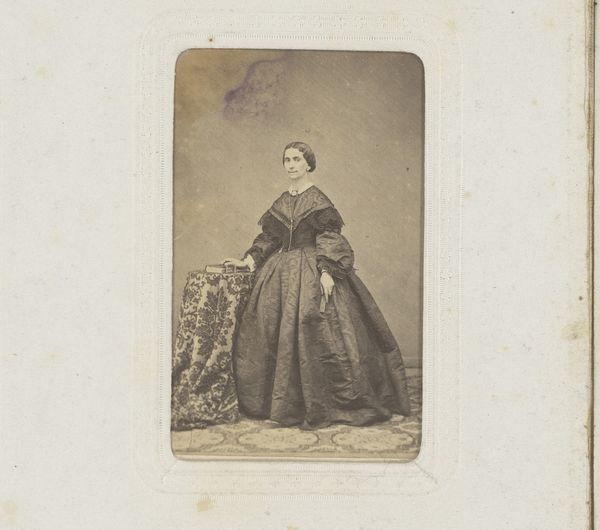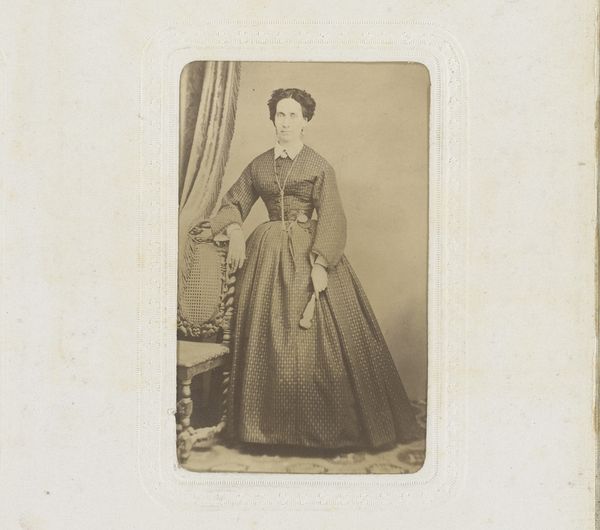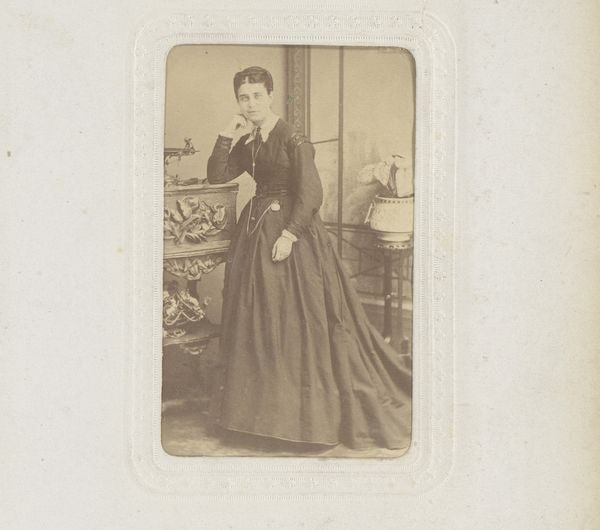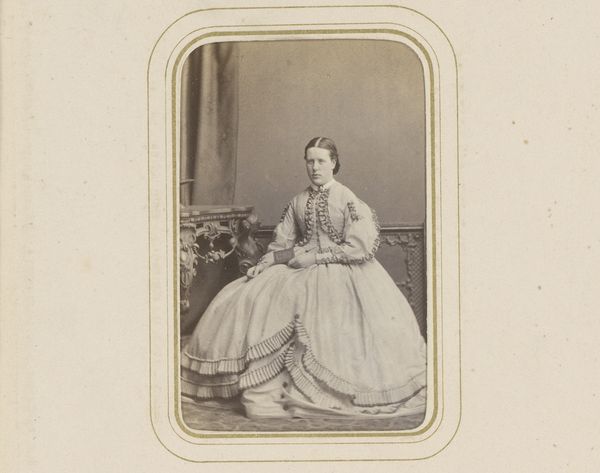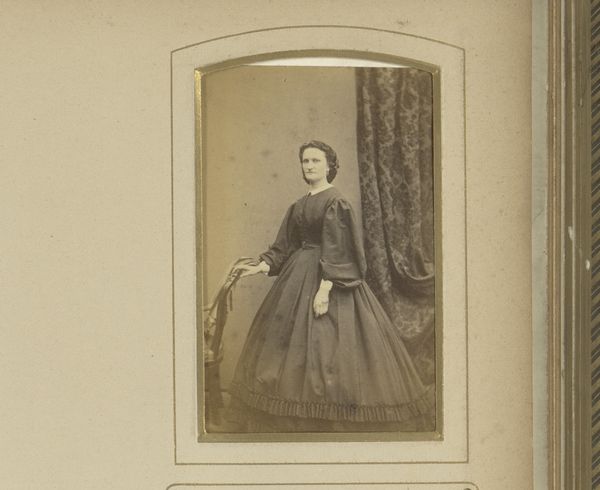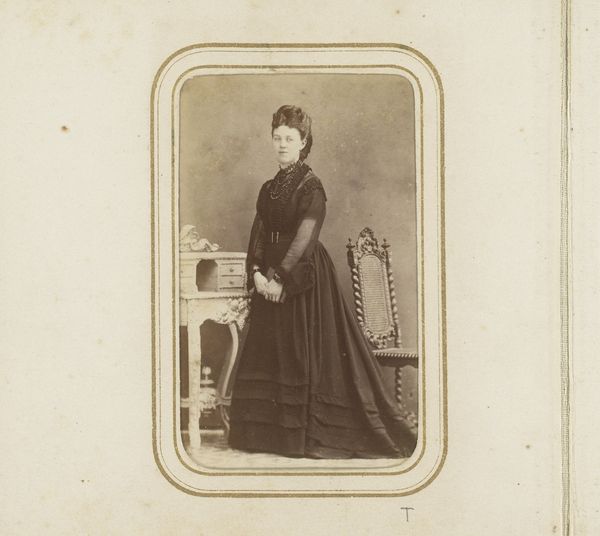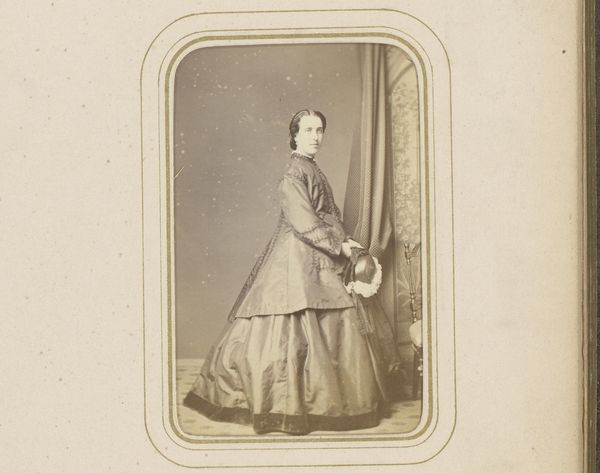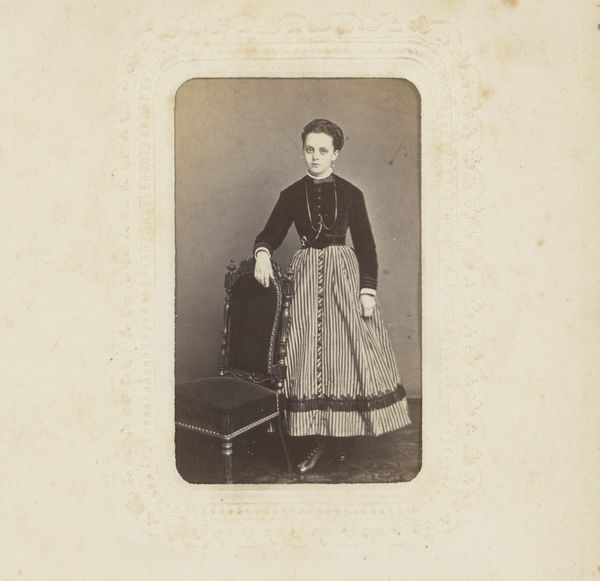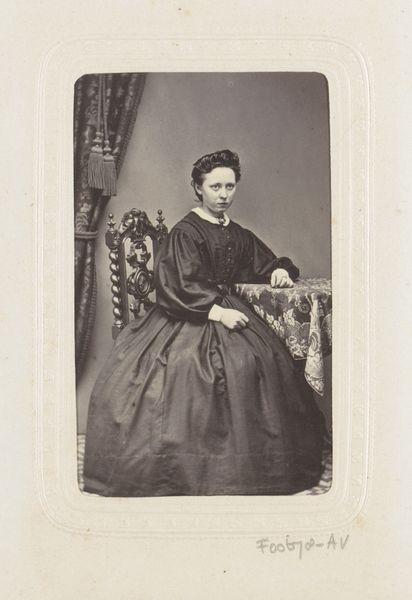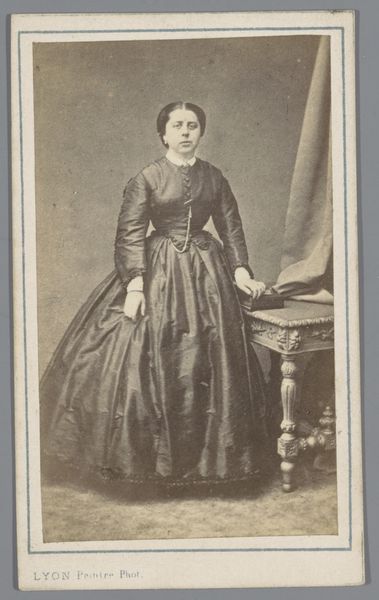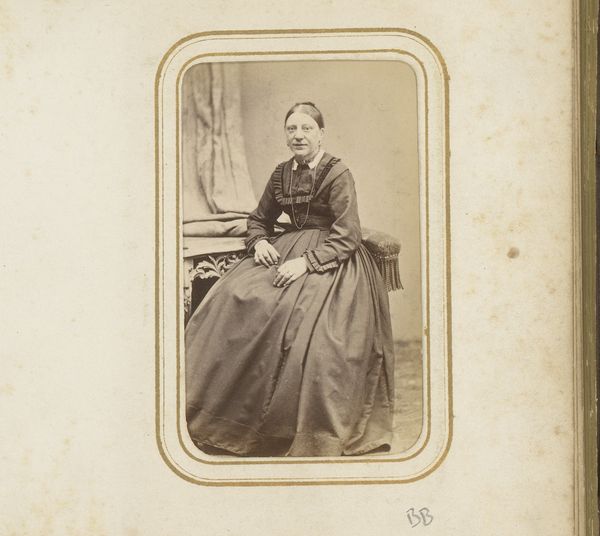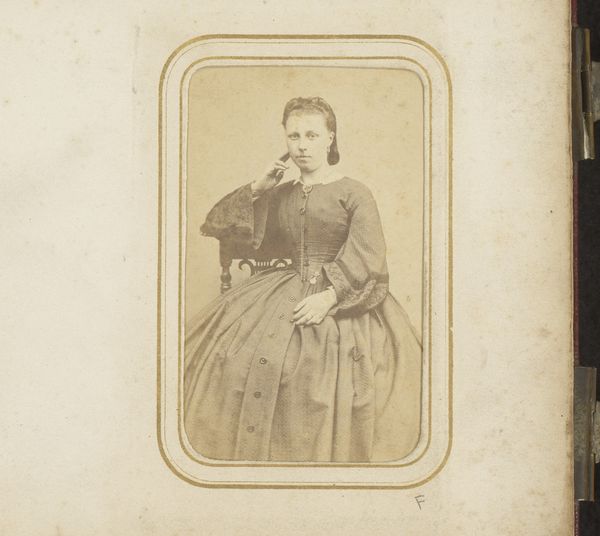
daguerreotype, photography
#
portrait
#
daguerreotype
#
photography
Dimensions: height 87 mm, width 53 mm
Copyright: Rijks Museum: Open Domain
Editor: Here we have a photographic portrait from between 1860 and 1900, "Portret van een vrouw, staand bij een tafel", made using the daguerreotype technique. The woman's serious expression and the formality of the dress and setting strike me as incredibly reserved. How do you interpret this work, especially given the context of when it was created? Curator: It’s fascinating how daguerreotypes, even seemingly simple portraits, encapsulate so much about the societal power structures of their time. The woman's posture, her dress – these aren’t just aesthetic choices, they reflect the limited roles and expectations placed upon women. This image is less about the individual and more about the performance of societal ideals. Editor: That's interesting, I hadn't considered the performative aspect so explicitly. Do you see that extending to the table she's posed next to, like a stage prop? Curator: Absolutely. Think of that table as a symbol of domesticity, of her expected sphere. Her proximity to it, her almost possessive hand upon it, reinforces that message. But does it fully succeed? Look at her gaze; there’s a defiance, perhaps a hint of questioning. I always wonder what constraints impacted her ability to express herself authentically. Editor: I see what you mean. There's almost a contradiction there, between the image she’s meant to project and something...else, simmering beneath the surface. I hadn't picked up on the idea of 'performance' or any defiance initially, but it does make me rethink the whole image and the implicit historical narrative. Curator: Precisely! And understanding these dynamics is key. It helps us see beyond the surface and realize photography can reinforce and even subtly resist the social mores. I now view these historical images, especially those with women, with new eyes.
Comments
No comments
Be the first to comment and join the conversation on the ultimate creative platform.
